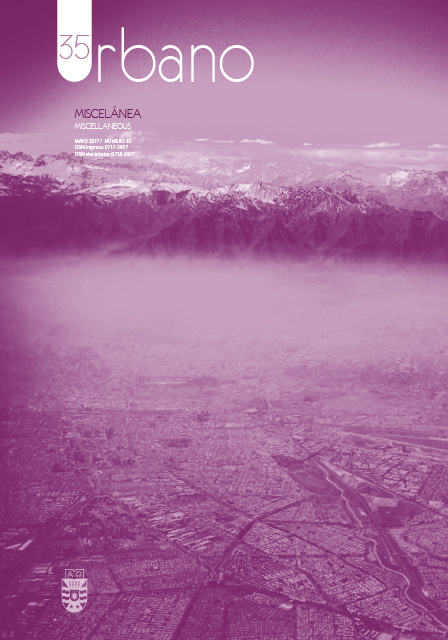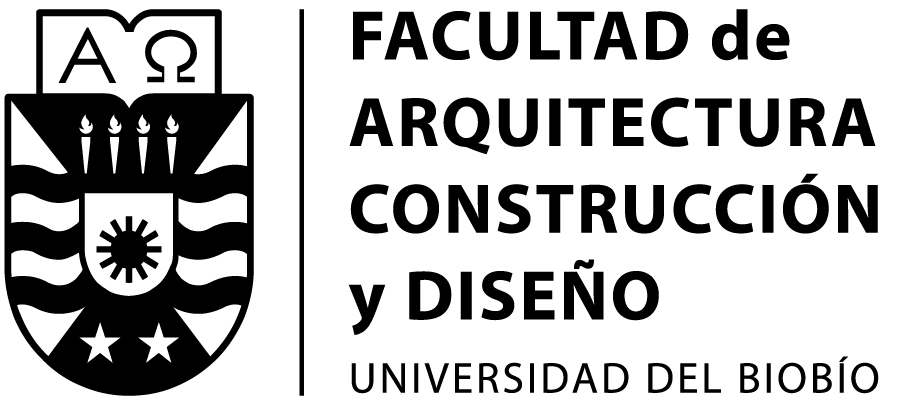El papel de la vegetación en la mejora del entorno de los edificios en los procesos de regeneración urbana
DOI:
https://doi.org/10.22320/07183607.2017.20.35.08Palabras clave:
Mejoramiento urbano, mejoramiento urbano, áreas verdes, áreas verdes, desarrollo sustentable, desarrollo sostenible, entorno., arbolado urbano, entornoResumen
El presente artículo expone los resultados parciales de una investigación más amplia sobre la regeneración urbana de barrios, titulada “Replicable and innovative future efficient districts and cities” (CITyFiED). En concreto, este trabajo se refiere a las posibilidades de mejora ecológica del entorno de los edificios proporcionada por la vegetación y su principal objetivo es el desarrollo de una estrategia global de tratamiento del mencionado entorno de los edificios en procesos de mejoramiento urbano. Para ello, se aborda una primera parte en la que se analizan los beneficios medioambientales de la vegetación y se exponen parámetros y criterios universales y generalizables sobre el tratamiento sostenible del espacio libre de los barrios. En una segunda parte, se lleva a cabo la aplicación de dichos parámetros a un caso concreto: el barrio de Torrelago, situado en la localidad de Laguna de Duero (Valladolid, España). De esa forma, el artículo concluye que el tratamiento del espacio libre que rodea los edificios juega un papel determinante en la sostenibilidad urbana.
Descargas
Citas
BECKER, Giseke y MOHREN, Richard. Der Biotopflächenfaktor als ökologischer Kennwert. Informe, Grundlagen zur Ermittlung und Zielgrössenbestimmung, Berlin, 1990. Disponible en: http://www.stadtentwicklung.berlin.de/umwelt/landschaftsplanung/bff/download/Auszug_BFF_Gutachten_1990.pdf
BERMEJO, Martín. Comparación de tiempos de trayectos metro-a pie-bici en la zona urbana de Barcelona. Tesina, Universitat Politècnica de Catalunya. Departament d’Infraestructura del Transport i del Territori, Barcelona, 2007.
BRIZ ESCRIBANO, Julian. Naturación urbana: cubiertas ecológicas y mejora ambiental. 2ª ed. Madrid: Mundi Prensa Libros , 1999.
BURÉS PASTOR, Silvia. Xerojardinería. 1º ed. Reus: Ediciones de horticultura, 1993.
DEL CAZ ENJUTO, María Rosario y TEODOSIO, Annarita. Natura, città e cambiamento climático. En: MOCCIA, Francesco Domenico (ed.). La Città Sobria. Napoli: INU (Istituto Nazionale di Urbanistica Edizioni Scientifiche Italiane), 2013, pp. 515-522.
ERELL, Evyatar, PEARLMUTTER, David y WILLIAMSON, Terry Urban microclimate: Designing the spaces Between buildings. 1º ed. London: Editorial Earthscan, 2010.
EUROPEAN Commission. Directorate-General for Research and Innovation Towards an EU Research and Innovation policy agenda for Nature-Based Solutions & Re-Naturing Cities. Final Report of the Horizon 2020 Expert Group on Nature-Based Solutions and Re-Naturing Cities . Luxembourg: Publications Office of the European Union, 2015.
FALCÓN, Antoni. Espacios verdes para una ciudad sostenible: Planificación, proyecto, mantenimiento y gestión. Barcelona: Editorial Gustavo Gili, S.L, 2008.
FIGUEROA CLEMENTE, Manuel Enrique. y REDONDO GÓMEZ, Susana. Los sumideros naturales de CO2. Una estrategia sostenible entre el cambio climático y el Protocolo de Kyoto desde las perspectivas urbana y territorial. 1º ed. Sevilla: Secretariado de publicaciones de la Universidad de Sevilla, 2007.
HERNÁNDEZ, Agustín. (Coord.). Manual de diseño bioclimático urbano. Recomendaciones para la elaboración de normativas urbanísticas. Bragança: Instituto Politécnico de Bragança, 2013.
HOUGH, Michael. Cities and Natural Process. 1ª ed. London: Editorial Routledge, 1995.
MIGLIORINI, Franco. Verde urbano. Parchi, giardini, paesaggio urbano: lo spazio aperto nella costruziones della città moderna. 3ª ed. Milano: Editorial Franco Angeli, 1992.
LAMELA, Antonio. MOLINÍ, Fernando y SALGADO, Miguel En búsqueda de unas recomendaciones urbanísticas mundiales de densidad y espacios verdes. Nimbus. Revista de Climatología, Meteorología y Paisaje, 2011, nº 27-28, pp. 95-118.
RUEDA, Salvador. Sistema de indicadores y condicionantes para ciudades grandes y medianas [en línea]. 2010. [Consultado: 2 septiembre 2016]. Disponible en: http://www.magrama.gob.es/es/calidad-y-evaluacionambiental/temas/medio-ambiente-urbano/indicadores_ciudades_grandes_y_medianas_tcm7-177731.pdf
SALVADOR PALOMO, Pedro José. La planificación verde en las ciudades . 1ª ed. Barcelona: Editorial Gustavo Gili, 2003
SALVO TIERRA, Enrique. GARCÍA-VEDUGO, Juan C. (Eds.). Naturaleza urbanizada. Estudios sobre el verde en la ciudad. 1ª ed. Málaga: Secretariado de publicaciones e intercambio científico de la Universidad de Málaga, 1994.
SECRETARÍA DEL CONVENIO SOBRE LA DIVERSIDAD BIOLÓGICA. Perspectiva de las ciudades y la diversidad biológica: Acciones y políticas, Una evaluación mundial de los vínculos entre la Urbanización, la Diversidad Biológica y los Servicios de los Ecosistemas – Resumen Ejecutivo. Montreal: 2012.
SUKOPP, Herbert. y WERNER, Peter. Naturaleza en las ciudades. Desarrollo de flora y fauna en áreas urbanas. Madrid: Ministerio de Obras Públicas y Urbanismo, 1989.
Descargas
Publicado
Cómo citar
Número
Sección
Licencia
El contenido de los artículos y reseñas que se publican en cada número de Urbano, es responsabilidad exclusiva de los autores y no representan necesariamente el pensamiento ni comprometen la opinión de la Universidad del Bío-Bío.
Las/os autoras/es conservarán sus derechos de autor, sin embargo, garantizarán a la revista el derecho de primera publicación y difusión de su obra. La publicación del artículo en Urbano estará sujeta a la Licencia de Reconocimiento de Creative Commons CC BY-SA que permite a otros compartir-copiar, transformar o crear nuevo material a partir de esta obra para cualquier propósito, incluso comercialmente, siempre y cuando se reconozcan la autoría y la primera publicación en esta revista, y sus nuevas creaciones estén bajo una licencia con los mismos términos.![]()























